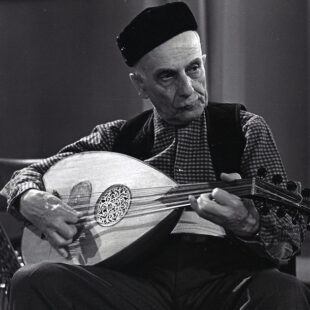00:00
Home / Her Work / Song Catalogue / Kanun Solo
Σόλο κανονάκι

The kanonaki (qanun in Turkish, rarely called quanun in Arabic) takes its name from the Pythagorean term kanon, meaning rule, which refers to the mathematical ratios of vibrating strings.
Belonging to the zither-harp family, the kanonaki is a direct descendant of the psaltery, an instrument from the Near East whose use spread in Greece during the Byzantine era. Indeed, in frescoes dating shortly after the 10th century, King David is depicted accompanying his psalms with a psaltery nearly identical to the modern kanonaki — the only difference being that the psaltery was played against the chest, while the kanonaki is rested on the performer’s knees.
The kanonaki is a wooden instrument with a trapezoidal shape. Its gut strings (nowadays made of nylon) are stretched parallel to the bases. The soundboard is partly made of thin wood and partly (about 15 cm) of skin. It features movable bridges which, when flipped, change the length of the strings and thus the pitch. There are different sizes of the instrument.
It is played using two plectrums, made of silver or tortoiseshell, fixed to the index fingers by rings. Its range spans three octaves plus three notes. Each note is produced by three unison strings. The tuning of the kanonaki changes according to the mode of the piece being performed.

Kanun